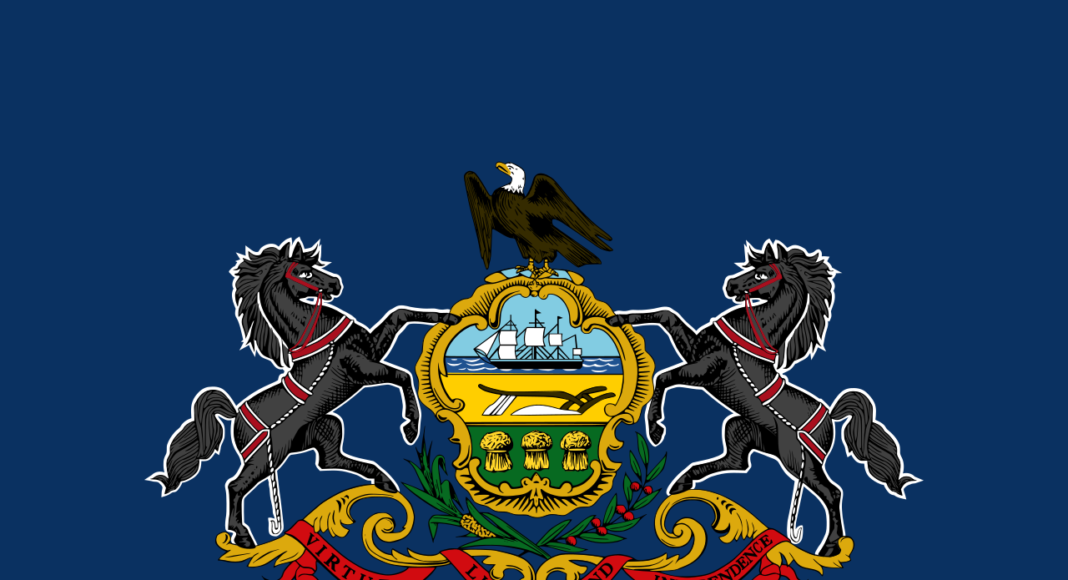This is the second of a series column that will look at the history of all 50 States,
all 5 territories, and the Capital and the influence history has on our
current political environments. The aim of this column is to capture that
our country is not just red or blue, but rather many shades in between.
Each Lower 48 state’s current political landscape can be traced back to
its early settlement and geography and its particular involvement in the
Civil War, the Industrial Revolution, and the Civil Rights Era.
Pennsylvania: a state well-known for its long history dating back to the formation of the United States, its diverse industries, and front-and-center position in perennial politics, it continues to be one of the most consequential states today.
Formation and Early History
Pennsylvania became the second state to ratify the US Constitution, after Delaware, on December 5, 1787. The first English charter to colonize the land was granted by King Charles II as a repayment to William Penn, whose father to whom the King was indebted. The colony is named after the Penn family, with “sylvania” being derived from Latin’s “from the forest.”
Penn formed the colony as a safe haven for Quakers, a controversial religion that opposed war and sought peace with the Natives. The Quakers’ situation in the North contributed to a staunch anti-slavery stance, and the border between Pennsylvania, Maryland, and Delaware served as the start of the Mason-Dixon Line that divided slave states from free states on a north-south basis.
Pennsylvania would serve a major role in the Revolution and the ensuing War, as Philadelphia served as the capital of the Thirteen Colonies, now aptly dubbed the Birthplace of Independence.
Civil War
Pennsylvania’s geography and staunch Northern qualities would lend itself to be a major control point during the Civil War. The famed Battle of Gettysburg and President Lincoln’s (R) Gettysburg Address would become some of the most historically significant moments in our country’s history. While Pennsylvania was somewhat divided on the issue of slavery, notably contributing to native son James Buchanan’s (D) controversial Presidency regarding softness on slavery and acceleration of the Civil War, the nascent Republican party would grab Pennsylvania in the 1860s and produce many individuals who continued to fight after the Civil War for abolition and civil rights. A Democratic Presidential nominee would not carry Pennsylvania from 1860 until FDR flipped it in 1936.
Pennsylvania would serve as a major destination for blacks and poor whites during the Great Migration from the South during Reconstruction, causing its population to swell during the 1920s.
Industrialization to Present Day
Pennsylvania was a national and international world leader in manufacturing during the Industrial Revolution, with Philadelphia becoming the world’s largest manufacturer of textile weaving.
Industrialization in the state relied heavily on fuel and Pennsylvania’s oil reserves became another boon to the state’s multiple flourishing economies. Coal mining and steel production would cement the state’s industrial elements to the present day.
Manufacturing continues to be a top industry, along with mining and agriculture as runners-up. Pennsylvania is a leading producer of aspirin, canned mushrooms, pretzels, potato chips, and ice cream in the United States, as per World Atlas. If Pennsylvania were its own country, it would have the sixteenth-largest economy on the planet.
Geography
Like all other states, Pennsylvania inherits much of its political identity from its geography.
Delaware Valley: Home to Philadelphia, largest population center in the state.
Pennsylvania Piedmont: Philadelphia collar counties, includes Dauphin County, home to the capital of Harrisburg and Hershey.
Northeastern PA: Home to Scranton, mining town Wilkes Barre, and the Pocono Mountains.
Susquehanna Valley: Home to eponymous river, largely rural and agrarian.
Western PA: steel towns, mining communities, home to Pittsburgh
The mining and steel towns once fit solidly into the unionized labor Democratic fold, with western and central PA being solidly Democratic until the early 2000s. Central PA has retained its Republican roots synonymous with farming. Philadelphia County has been a Democratic bastion for much of its life, having not voted for a Republican Presidential nominee since 1932 for Herbert Hoover.
Current Leanings
Pennsylvania presents itself a quintessential swing state, although it only became seriously competitive in the 1960s. Today, the divide could not be more noticeable: urban centers, suburban areas, and college towns leaning blue, with rural areas leaning red. The true fight for PA is in its suburbs, while Republicans continue to attempt to court classically blue union households in the state’s vibrant mining and steel industries. Democrats have parried losses there with growth in the cities among minority voters and college-educated suburbanites.
Donald Trump (R-NY) became the first Republican to win PA since George Bush Sr. in 1988, taking a crucial block out of the so-called “blue wall.”
Republicans have not won a Governors race here since 2010. Republicans controlled both US Senate seats as recently as 2007. Senator John Fetterman’s (D) win in the 2022 Senate race marked the first time Democrats have controlled both US Senate seats – through election – since 1856. PA still splits its tickets when candidate quality is on the line, far less than others states do, although certain regions are much less elastic than they once were. Going forward, Pennsylvania seems it will not lose its competitive image any time soon. The question for both parties essentially comes down to a turnout game and halfway decent candidate quality.





